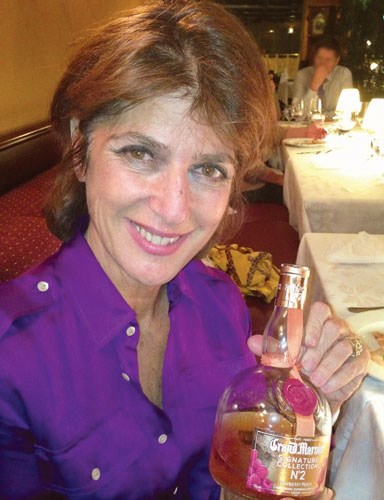Smart, sophisticated, charming and elegant are all words I could use to describe Alexandra Marnier Lapostolle.
However, the welltravelled president of Marnier-Lapostolle, who slipped through Vancouver last week, is also a lot of unstuffy fun.
Ask her to talk about her pioneering Chilean winery (a strikingly modern structure complete with the world's smallest Relais Chateau and a barrel cellar to rival Opus One) and her eyes light up. She seems even more interested at the mention of crystal clear Kappa Pisco, or the latest incarnation of Grand Marnier liqueur (the lesssugared, more nuanced peach and raspberry-kissed Signature Collection No. 2).
We were gathered at Vancouver's Le Crocodile to taste wines, from both Chateau de Sancere and the Chilean venture, in an evening that proved nothing short of spectacular in the glass and on the plate.
I won't tease you with a blow-by-blow of every pairing, but a few tastes in particular popped out although a few, sadly, aren't available.
Last month in London I attended a tasting that addressed the question as to whether Chilean (and Argentine and South African) wines can age. The term "age" is relative, of course, but the seminar confirmed what I already knew: indeed they can.
Aside from the superlative match of Cuvée Alexandre Carmenere 2011 with Le Crocodile's duo of duck breast and venison two ways (oh, and lobster scallop terrine with Chateau de Sancerre Cuvée Connetable '09) the other star of the night was the now 10-year-old icon Clos Apalta 2002.
The Michel Rolland orchestrated blend of Carmenere, Cab Sauv and Merlot is still fresh and vibrant with beautifully balanced black fruit and licorice notes in plush tannins with a touch of mineral. Judging by its performance, the 2012 (BCLS $124.99) should perform equally well if not better a decade from now.
But back to the Kappa, which debuted at the 2011 Vancouver International Wine Festival: Distilled with a firm nod to Cognac, made from Muscat grapes, it's impossibly clear and tastes as pure as it looks, with floral and fruity notes with a dangerously smooth texture and finish, all befitting its unabashedly sleek and sexy package.
Known for its well-made and generally affordable, food-friendly table wines, Languedoc is on the rise, as names such as Fitou, Corbières and Minervois are turning up more often.
The region's grapes, such as Grenache, Carignan and Mouvedre, are also becoming more known. However, perhaps the secret to discovering Languedoc is to forget about the varieties (there are a score of them) and just go for what's in the bottle. Open your mind as well as your palate and you'll be pleasantly surprised. Also, from red and white, sweet and dry, still and sparkling, Languedoc probably has more wine styles to enjoy than just about anywhere else.
A quartet of Vancouver wine bars (Brix, TWB at Provence, Seasons and Siena) celebrates Languedoc, pouring wines by the glass with specially paired plates, until November 14. Visit any one of them and you can enter to win your very own "wine bar crawl" around all four restos, complete with limo for the night to make sure you travel in style and get home safely. Full details at www.hiredbelly.com Belly's Budget Best ¦ St. Saturnin Le Clocher AOC Coteaux du Languedoc Red 2010 Here's an estate-grown Languedoc mediumbodied red that punches well above its weight: nicely fruit and acid balanced with plush red berries, damson and spicy notes. Try it with a fall stew or anything barbecued ($14.98, BCLS).
Tim Pawsey covers food and wine for numerous publications and online as the Hired Belly at hiredbelly. com. Contact: rebelmouse. com/hiredbelly, on Twitter @hiredbelly or email [email protected].



